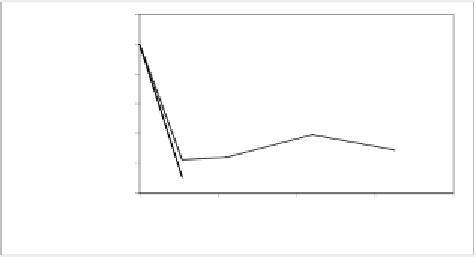Biology Reference
In-Depth Information
TNFα secretion from hPBMC's. Since the receptor system is composed
of several individual and obligate proteins components, perhaps the
dimeric nature of the active tannins and the oligomeric nature of the
receptor cluster form a match. Merging these observations leads to the
testable hypothesis that it might be possible to identify tannin analogues
that meet the two criteria listed above by using galloyl groups for
binding/recognition, but perhaps spatially misaligning them relative to
those of the active tannins in order to prevent the apparently necessary
receptor organization between CD14, TLR4 and MD2 that precedes
signal transduction. In this way, competitive (to LPS/lipid A) binding
without a biological consequence might be realized (= antagonist).
6.5.1
β
-PGG as an LPS antagonist
The observation that the monomeric gallotannin β-PGG (
66
)
demonstrated almost no TNFα producing ability (see Fig. 6.16) was used
as a first pass to test this premise. Apparently, this small tannin molecule
cannot provide the necessary binding moieties in the correct orientation
for recognizing and organizing the entire receptor complex as is required
to initiate the nuclear signaling cascade. However, the hope was that β-
PGG, featuring the polygalloyl periphery characteristic of the active
tannin constructs, would bind competitively with the lipid A fragment of
LPS at one or more of the receptors, thus preventing the endotoxin
component from fulfilling this organizational role.
120
100
80
TNF
α
(as
% of blank
control)
60
40
20
Trial 1
Trial 2
0
0
10
20
30
40
β
-PGG Conc (
μ
M)
Fig. 6.21 Dose dependent inhibition of LPS-stimulated TNFα release from hPBMC's by
β-PGG.



















